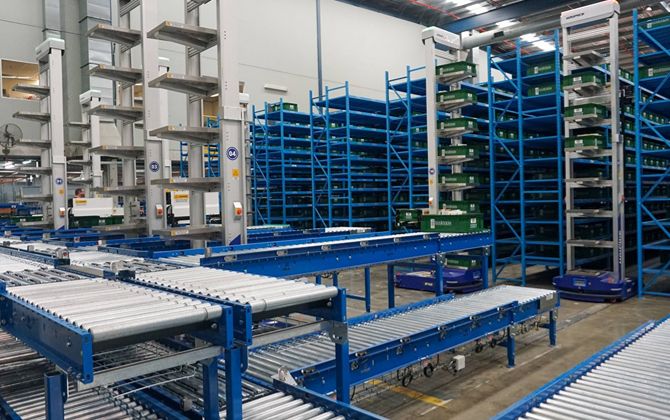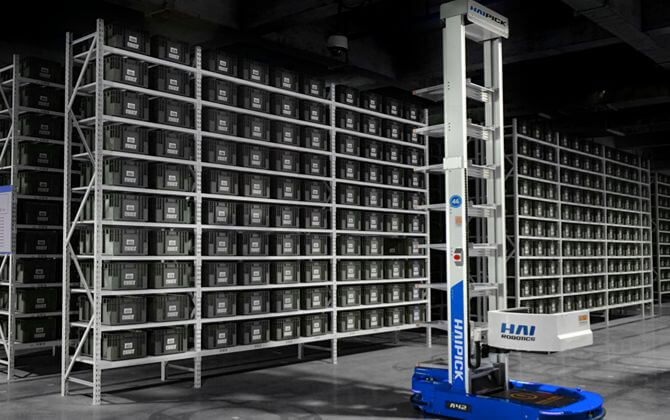Robot-as-a-Service - The Future of Warehouses?
Damien Skinner, Country Manager of the UK & Ireland at Hai Robotics, spoke with Tony Fyler, from Tech HQ, to discuss what the warehouse of the future would look like.
Damien Skinner, Country Manager of the UK & Ireland at Hai Robotics, spoke with Tony Fyler, from Tech HQ, to discuss what the warehouse of the future would look like.
 Tech HQ: How will the warehouses of the future be designed?
Tech HQ: How will the warehouses of the future be designed?
Damien Skinner: That will be split between two main user-groups – smaller, regional, and start-up warehouse owners, and larger companies with much higher throughput, even up to multi-national level like Amazon.
The big and the small
Damien Skinner: For the smaller companies, the key will be scalability – the ability to start small and grow to take advantage of the space and robotics capabilities they need as the business grows. For instance, you may have more urban, relatively vertical warehouses, with a handful of robots and a very visual proposition to start with, for easy learning. Then you’ll be able to add in robots to deal with increased demand as and when you need them.
For larger companies, the key concern will be flexibility. They’ll need a solution that can adapt, change, grow – or even shrink – according to the customer demand. Imagine you have data on your regular monthly throughput, and you have only the robots you need to deal with that, because of course your bottom line is key.
Then you hit the preparation for Black Friday, Christmas, and the January sales. Boom – you’re going to need a lot more robots to deal with the peak demand in those three months. So you’ll need a solution with flexibility to help you cope with that – and that’s where Robots-as-a-Service (RaaS) comes in.
Using that model, where you lease the robots you need, allows you to deal with peak throughput, with the advantage of not being tied into a purchase model. This model allows large warehouse owners to reduce their capital expenditure, and deal with those productivity-spikes as an operating expense.
Tech HQ: That feels instinctively like it demands a lot of disruption to the system – adding new robots, and then removing them when you don’t need them anymore.
RaaS – a new way to do robotics
Damien Skinner: Ah, but it needn’t be that much hassle. I mean, the way you’d do it with traditional automation is that when you have a peak of need, you’d try to bring the peak down so your existing system could handle it, and then pay your operatives additional money to stay on longer and get the reduced peak dealt with.
And yes, your traditional automation system would tend to be hardwired, heavy plant, miles of complicated belts and all that. Traditionally, that’d be the way you’d think of an expansion – lots of work, lots of upheaval, and probably not something you could economically do just for, say, three months of the year. Traditional automation definitely ran you into that complexity, cost, and capital expenditure mire.

The future will be easier
Damien Skinner: With a RaaS system, if the supplier has the robots in stock, they’re relatively easy to put in place. And you update your warehouse management system to recognize a new robot on the line, and as soon as it recognizes the task it’s there for, boom! You’ve increased your throughput – and by using operating expense, rather than capital expenditure.
It’s not as easy yet as it will be as the system matures and gets more well known and used, but it’s about as easy as moving house, compared to having to knock down your existing house and building a new one in your new location. The RaaS model is the key to “as-needed” robofication of warehouses in the future. It can be done right now, but in the future, it will be done easily, regularly, and ahead of time, to maximize throughput in those months of peak demand.
Read the full interview here
Download our latest white paper: The Warehouse of the Future
Learn more about Hai Robotics
Contact us: marketing.eu@hairobotics.com

